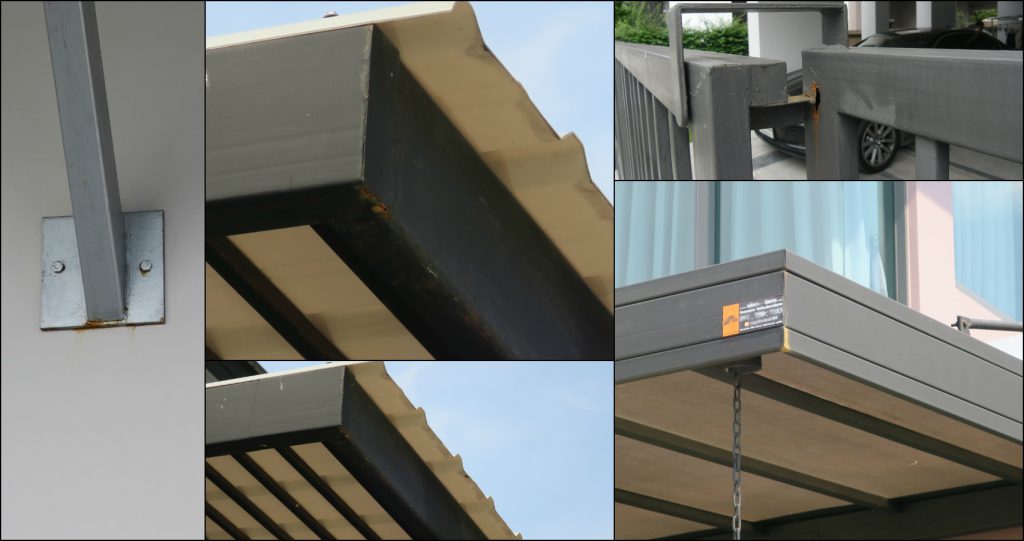Rust on Metal VS Renovation Works. Is it Unable to Prevent?
There has been a myth that many believe about rust on metal. That there will be no rust if multi layers of premium grade anti-rust primer are applied. However, time has proven the myth is untrue, as a couple of years can bring the rundown of reddish rust stain. The structure will fortunately remain acceptable if its original paint is black. On the contrary, rust stains on white will only turn the house into a lasting nightmare.
So why does the anti-rust primer fail to prevent rust stains?
1. It is hardly possible to thoroughly paint the inside of hollow metal frames.
2. Most metal frames are only finished with a few welding points to minimize production time. These metal frames are generally thin. Edge-welded metal frame that efficiently prevents leaks requires skilled craftsman, while the majority of ironworkers are general welders. For this reason, the structure can retain surplus rainwater within by which will become rust later.
3. From our experiences, Fiber House had demolished many metal frames to replace them with our aluminum structure. One similar thing we encountered in all demolitions is a large collection of disgusting rusty water. As if it is the tip of iceberg, rust that we spot on the outside is a mere fraction of actual rusty condition.

Samples of rust existed only after one year. Rusty water leaks out of corners of hollow metal frames.
Is there an absolute prevention? Frankly speaking, yes, there is, but customers generally don’t buy due to prolonged production time and high costs. Most ironworkers also don’t support the idea because of uncompetitive prices.
1. Change from normal hollow metal frame to galvanized metal frame. With this method, the metal surface is galvanized by the factory (though with much higher costs). A good sample is public utility poles. Standing under rain and shine every day, they aren’t getting rusty regardless of protective coating. However, structure projects may require cutting and welding, which can cause the material to lose galvanized component from cutting and high heat of welding. Rust can therefore exist around joints. Another drawback is galvanized metal with protective coating tend to crack at a later time because of inefficient color adhesion.
2. Ask the welder to do edge-welding on all joints to prevent leakage. The method is quite impossible, as it consumes considerable level of skill, time and labor. Particularly areas with numerous joints, such as gate. On the other hand, if any welder is okay with the idea, the labor cost can be ridiculously expensive that the job would never come into reality.
3. Fill joints with acrylic sealant which allows preventive coating. Although the method sounds reasonable and skilled welders might agree, the method can hardly bring satisfactory results, as metal and acrylic are naturally unable to conjoin completely. Cracks and leakage inevitably exist later.
4. Transfer the finished structure to a powder coating plant to undergo similar coating process as outdoor furniture. This is considered the best method for metal works. Some homeowners applied this process to gate works by which could cost a fortune to make because of their disfavor of metal rust and glistening stainless steel. Fortunately, Fiber House has a new alternative for rust-free aluminum gates that strike right to this problem.